**Complete Guide How to Raise Bee Honey for Beginners**
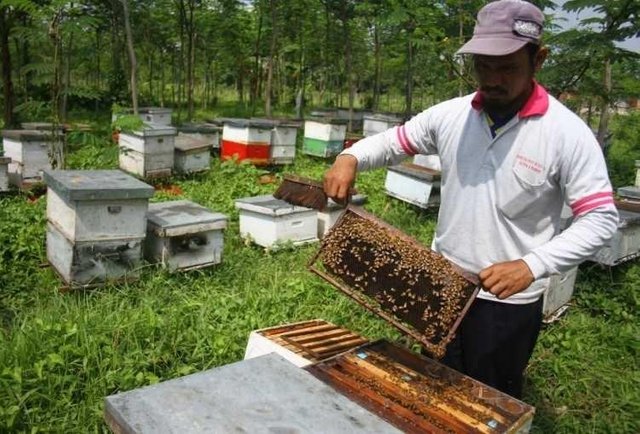
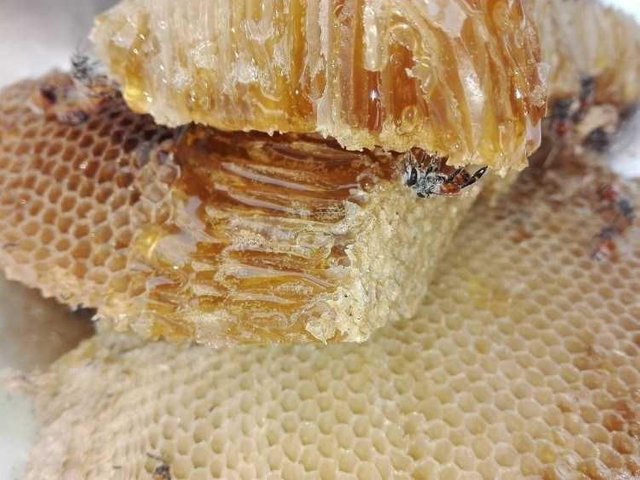
Honeybees have products such as honey, beeswax, propolis, pollen (pollen), royal jelly, and each is rich in benefits. In the past to get all that, people will hunt to the forest by burning the hive to keep the bees away from the nest, then from the hive is taken the result. This will break off the bees and colonies, making the bees more difficult to find. Here the way to stay sustainable is by raising honey bees, here we write the step by step guides the most comprehensive way of honey bee for beginners. Our interest will be simplified so that it can be done for those who will start this business.
Choice of Honey Bee Place

The choice of place, that's the first thing we should do if planning to honey bee, because it will affect the results and age of the bees, the selection of inappropriate places to make the honey produced can not be maximal and kualiatas less good.
Temperature.
Find a place with the ideal temperature, the bees usually stay at an average temperature of 26 degrees Celsius. maximum. To outsmart the temperature you can estimate the thickness of the wood used to build the nest, to avoid sudden temperature changes in the honeycomb.Avoid the Crowds.
Find a quiet place, make the bees become aggressive, make it quickly die. Besides, if placed in peace will be dangerous to others around.There is a source of clean water.
Water is useful for drinking bees. If not there can be provided by themselves.Find a place where there are many flowers, with a distance of no more than 2 km.
This way can be tricked by occasionally bringing a honeycomb to a place where there are many nektra it.Avoid places contained from strong winds.
This can be done by limiting the vicinity of the beekeeping.Find locations that are easy to access by vehicle.
The choice of place is of course flexible, even if only in the yard of the house is not why, as long as the basic things such as availability of nectar, clean water and the absence of strong winds around it must be met. But of course more leverage if all the above conditions are met.
Tools and materials
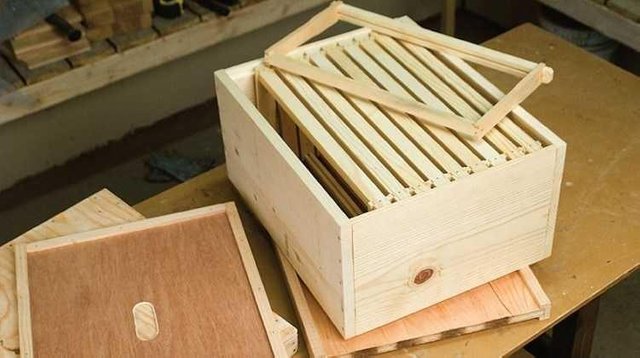
After the determination of the place, then the determination of tools and materials, we use to make the nest and to harvest honey that has been produced bees later, among which is required bees forks, wood saws, bee knives, zinc scissors, hammers, smokers to menjep bees, to save yourself when harvesting. While the material that we need to prepare for the manufacture of bee hives, or commonly called stup is wood, nails, wire netting, jute rope or plastic used oil cans or simply use wood glondongan if any. Place the stup by hanging it to avoid pest attacks. When finished making the enclosure place the cage facing east, but still shady during the day, can use the roof as well. If you create more than one stup. Arrange the setup in a row with a distance of about 1.5 meters. If the setup is buffed then love water or lubricating oil, and apply ant medicine to not be disturbed by insects.
Types of Bees
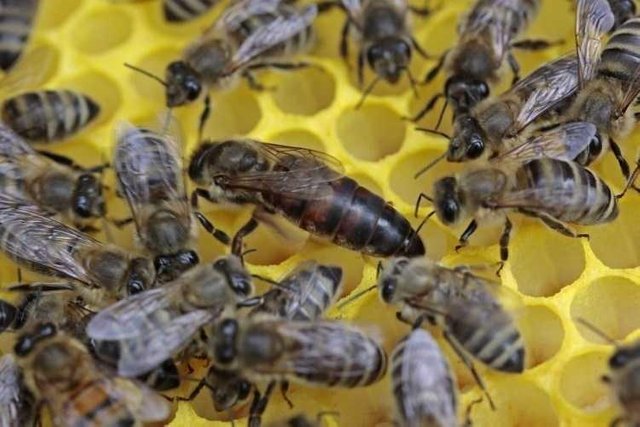
Before entering the bee to stup we need to know the type of bee type. The following types of bees to make no mistake in choosing it, along with the task and explanation.
Workers Bees He is the most often we see wandering outside stup, this bee is tasked to find the nectar and collect it, clean the hive, feed the bees and queen bees, keep the bee hive to stay safe, duty mengugukan flour saridan water and bees is also who is in charge of building a beehive.
Queen Bee Has an elongated body. This bee is the most important, he is followed by the worker bee and the bees. Has an important role in the survival of a bee colony. In a day this bee can produce more than 1000 eggs. This bee produces three types of bees, worker bees, queen bee itself and bees.
Male Bee He duty to marry the queen bee. After marrying the bee queen bee will soon die. Has the largest body than other bees. He has two testicles, each of which can produce spermatozoa.
Selection of Superior Honey Bee Seed
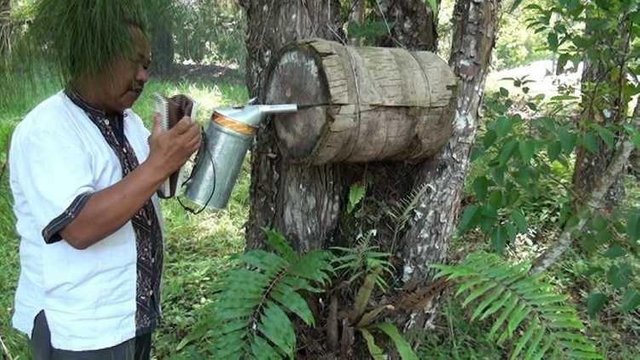
Of course after making the cage the most important thing is the bee, we need a quality bee for the best crop. There are three ways to get bees to fill the stup we have prepared before.
A. Installing Traps Passively we can create a fishing spot made of coconut trunks made cavities, commonly called glodog (klutuk). This glodog should be dry to avoid mold growth. We just wait until filled with bee colony that will nest there. Place a glodok in the shade, like a leafy tree limb. Make a hole glodok not too big to avoid the entry of gecko into it. Once filled the bee colony should be removed carefully. Once setup is ready, the glodok is opened and reversed just below the stup, do it slowly. Then tap the glodog slowly and smoothly, to speed up the transfer of the colony into the stup.
B. Hunting in the Wild When hunting first prepare queen cages, hunt box, black cone-shaped gauze (like a net). After finding the colony immediately find the queen bee and enter into the queen cage. Put the black gauze on the colony, with the hole facing the colony, then the bees are harassed to fly all and perch on the gauze. Can be done with cigarette smoke, or mosquito coils to keep the bees from leaving their nests.
When the bee has entered the gauze immediately close and tie, ready to take home. Furthermore, the nest is inserted into the comb / frame. Of course select the nest that is still good, there are honey and saplings, cut carefully and stick on the comb, do not forget tied. Save and insert the embedded hive into the stitch into the new stup. Do not forget to regiment the colony in the box of rage.
C. Buy Honey Bee Colony Complete with Stup / Glodog This method is most commonly done, select superior seeds that have been marketed. In Indonesia alone there are two types namely A. Cerana (local) and A. Mellifera (import). Here the bee queen is at the core of the formation of a new bee colony, hence the selection of superior species aims to be in a bee colony can produce maximally.
Colony Examination
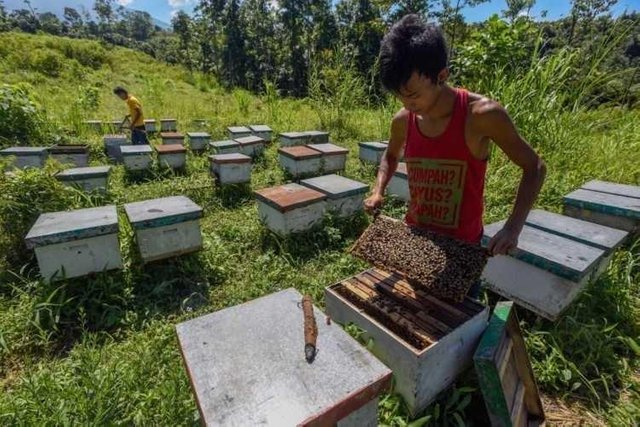
Useful to know the condition of breeding bee colony. Do it when the sun is bright and bright, when the bees work that is the morning at 6:00 to 10:00. or if the afternoon is at 16:00 to 18:00 ie when the adult bees many out of the nest, it is the best time to examine the colony. Of course the bees should not be disturbed because of cold weather, rain and wind or even at night. Inspection of stup (container / colony box). Do not do it from the front because it prevents the entry of worker bees into the nest can make the bees act aggressively and sting, do from the back or right side left. To calm the bees use cigarette smoke or coconut fiber smoke, exhale using tools.
Check one by one frame, starting from frame number two from left, lift slowly and observe carefully honeycomb part, and lava. Place it back after inspection. Continue the number one and then the third frame and so on. This is done to avoid the queen is not disturbed. Perform checks once a week. To avoid the disruption of pests, know the contents of the nest, the state of the queen and the comparison between worker bees and bees we also need to do a colony examination. If you find a full frame then add a new frame.
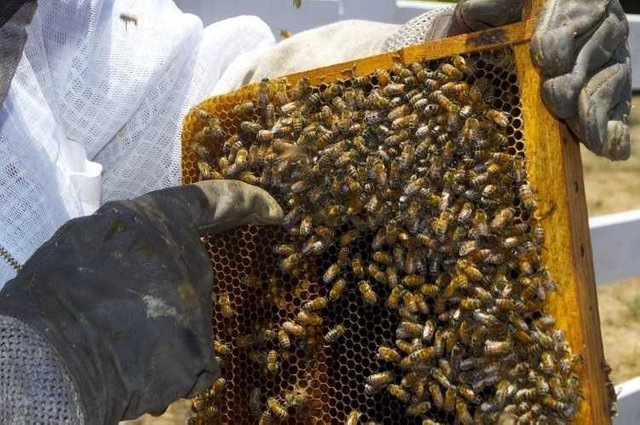
If there is a frame with the center of the black is marked frames are affected peyakit. This nest needs to be burned or thrown away. If more bees are found than the male bees, kill or exhaust the stud by killing the eggs. Needs of bees stud only 200 an tail in one colony. Observe the queen's condition, whether there is already a replacement queen and still active. If there is an old queen with little followers can be kicked out or killed. Observe also the balance between pollen and pollen with nectar in the honeycomb. If too much pollen then around the plant contains less nectar. Can be overcome by stupid mengangon to areas that if there are plants with excess nectar.
Colony Management
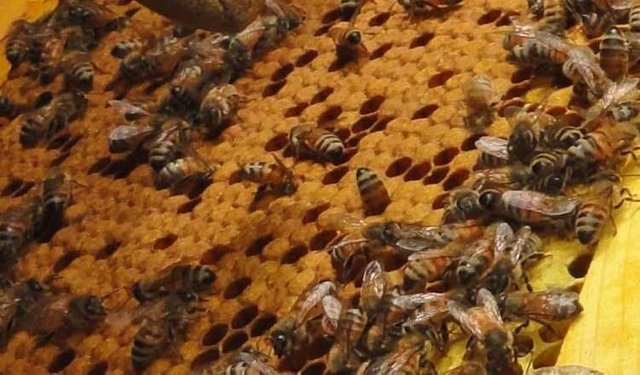
Colony Management used to control the colony, is done to maximize any performance of the colony, whether too much so it needs to be split or too little so that the need to merge or even change the queen, can also induce the queen.
The incorporation of colonies Sometimes as breeders we need to merge two weak colonies into one stronger, or colony without queens to other colonies. If both have queens then choose the best queen in both, the other is off. It can be done by stacking two bee colonies by giving the sealer of the paper a small hole and has been smeared with liquid honey or sugar. Within a day or two usually bees have penetrated the insulating paper, gradually the bees will mix. This is done at night.
Solving the Colony. Usually marked by the presence of new queen cells when there is still a queen. This means that there will be bee reproduction and colonization efforts, so we need to have regular and thorough checks to avoid wild splits that can harm us. The way simply move the queen cell to a new place.
Queen Turnover Done with colony split, because queen bee has a certain period of productive life. Gives queen bees from other colonies. By taking the old queen and replacing it with a new queen. Stimulate the formation of queen cells candidates. How to kill the old queen so that makes the worker bees form a new queen.
Feeding Bees
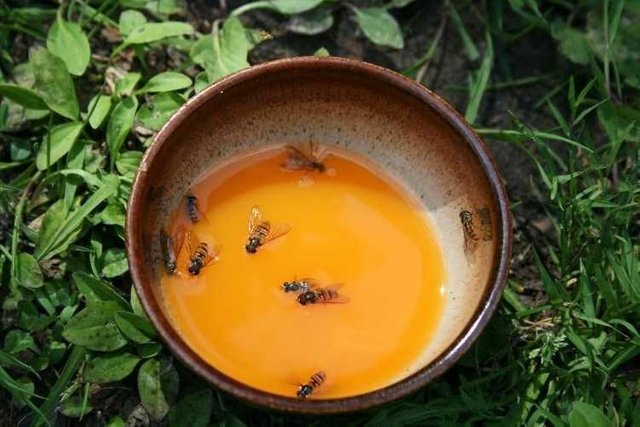
Honeybees will breed and have large colonies if environmental conditions support. Environment here is the availability of many plants producing nectar and pollen. To support the availability of bee feed that produces excessive nectar throughout the year at a beekeeping location it is necessary to take the data collection of existing bee plant species. Furthermore, enrichment of plant species according to the conditions of space and climate around the cage. Some plants and feeds that can help maximize bee livestock among others, pollen pollen, randu pollen, extra rubber flora, sugar cane pollen, sengon, acacia, mango, star fruit.
Harvesting or Migration
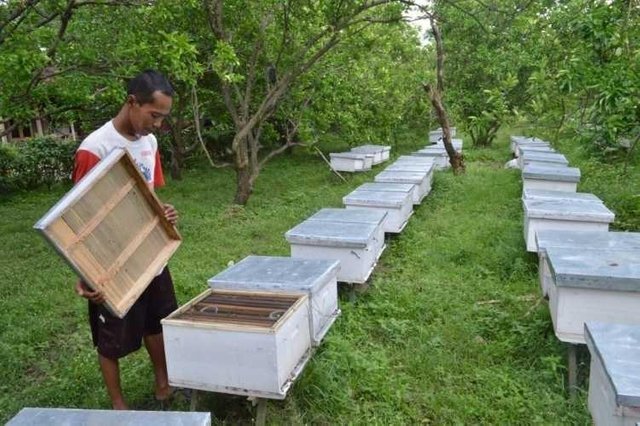
If the availability of food for bees is not possible to cultivate environment then it can be done pengangonan. Transfer of bee colonies to available feeding spots. This is only for the type of bee A. Mellifera. The move is done at night when all the bees have entered the stup and are already in a state of calm. When the afternoon all the bees have entered, close the stup, sisiran containing honey replaced with the blank, keep the comb so as not to move easily, at the time of transport try the hole and ventilation is not facing towards the journey. Once it is open bit by bit so the worker bees recognize the area around. If traveling far to stay then enter the sugar / honey solution into the stup before wrapping, as food supply and so that no bees are starving to death.
Pests and Controls
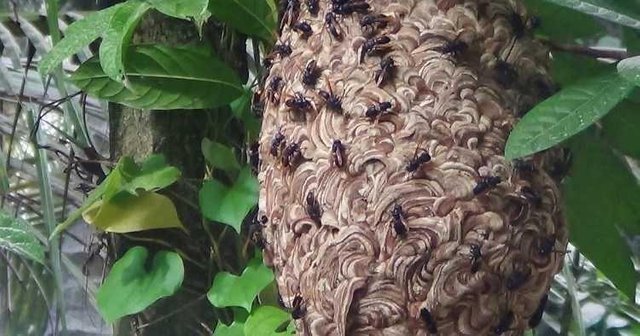
One of the supporting factors for honeybees is the presence or absence of environmental disturbances, especially pests, predators and diseases. In that case it is necessary to hold control of pests and bullies. Here are the most common pests and how to overcome them. Wasp. A kind of insecta is still in the family of bees but acts as a honey bee predator. In ordinary people called endas beard (Java) or hornbill (sunda). Tabuhan prey on honey bees clearly, can be prevented by capturing and killing him directly or burning hive in the environment around the fire.
Ant.
The most common disorder, the ants will make a nest inside the honeycomb and eat the honey produced by the bees. Hijrah bees cause leaving the nest. Prevention can be done by applying oil on the stable support pole so that ants can not creep up.
Moth wax.
Butterfly-like insects, this pest damages the honeycomb, laying in it, the honeycomb that is attacked by this pest must be cut and burned to perish.
Lizard.
Sometimes this one pest when acute starvation eats honeybees. Can be prevented by guarding and eviction when there is a lizard approaching.
Cockroach.
This animal can make the bees become wild and damage the wax in the nest. Can be prevented by minimizing the entrance hole so that the cockroach can not enter. Birds of insect predators, call it a wallet, fond of eating bees, to overcome it enough election of places kept away from home swallow / similar bird
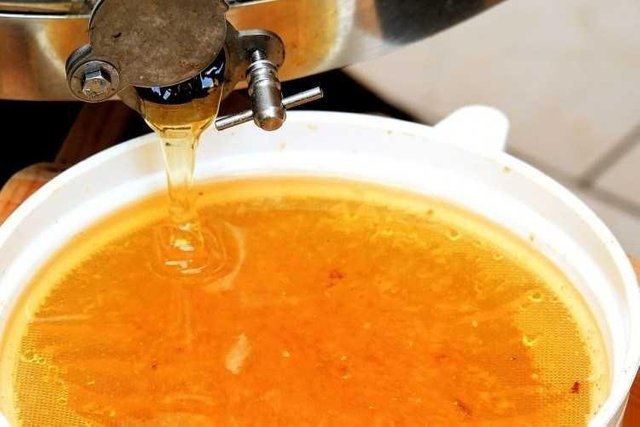
The main result of bees is honey, has many benefits and high selling value. And there are also other results of royal jelly (queen milk), lillin bee (night), pollen (pollen) and most valuable propolis. Harvest of honey done at 1-2 weeks after the flower season. Characteristics of honey is ready to harvest seen from the comb that has been covered by a thin layer of wax. Before the harvested comb is cleaned first from the bee that sticks after the cover layer is peeled.
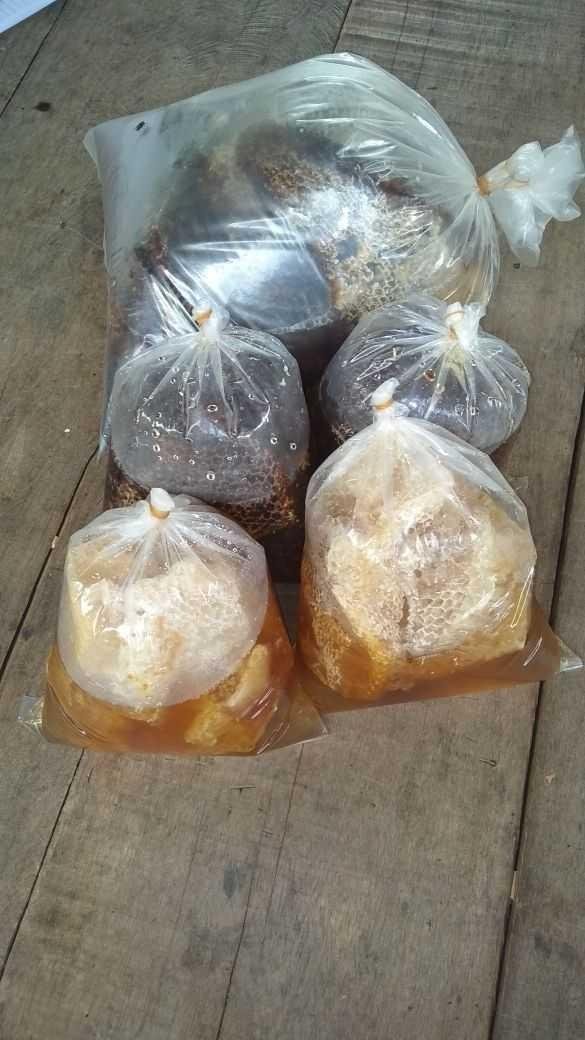
Then the comb is removed to be taken honey. More precisely at the following harvest sequence, first take and wash the ready-to-harvest comb, the second peel the wax cover coat using a knife, the three shelled pears are extracted in a honey extractor, then filtered and refine, after finishing the honey store at room temperature to remove air bubble, and finally do the packaging of honey into the bottle. thank you may be useful. any need to add please comment.
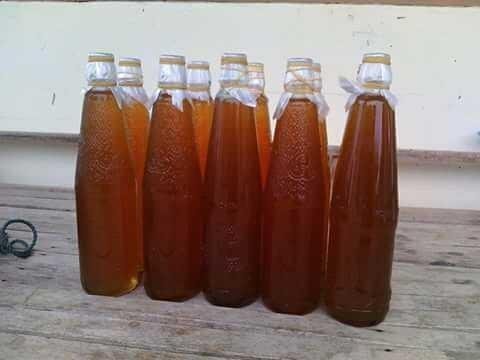
Useful a lot, good post
Thanks
carong that bahasa inggreh droe neuh....pat neumereno ile...
hahaha...nyan pasti di Kulam Guda privat...han jeut kon mesti nyo....
Bereh ...
Wow!